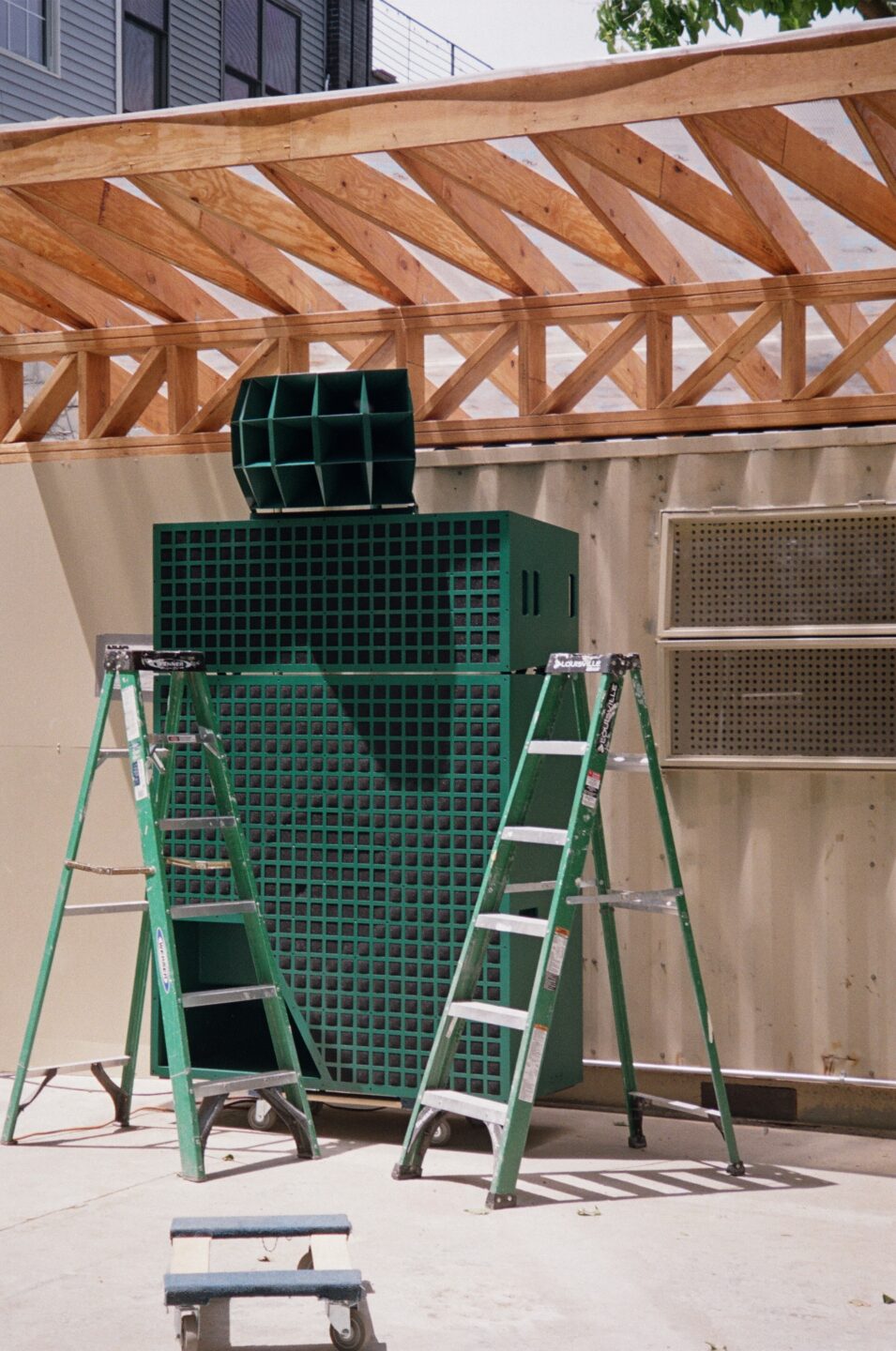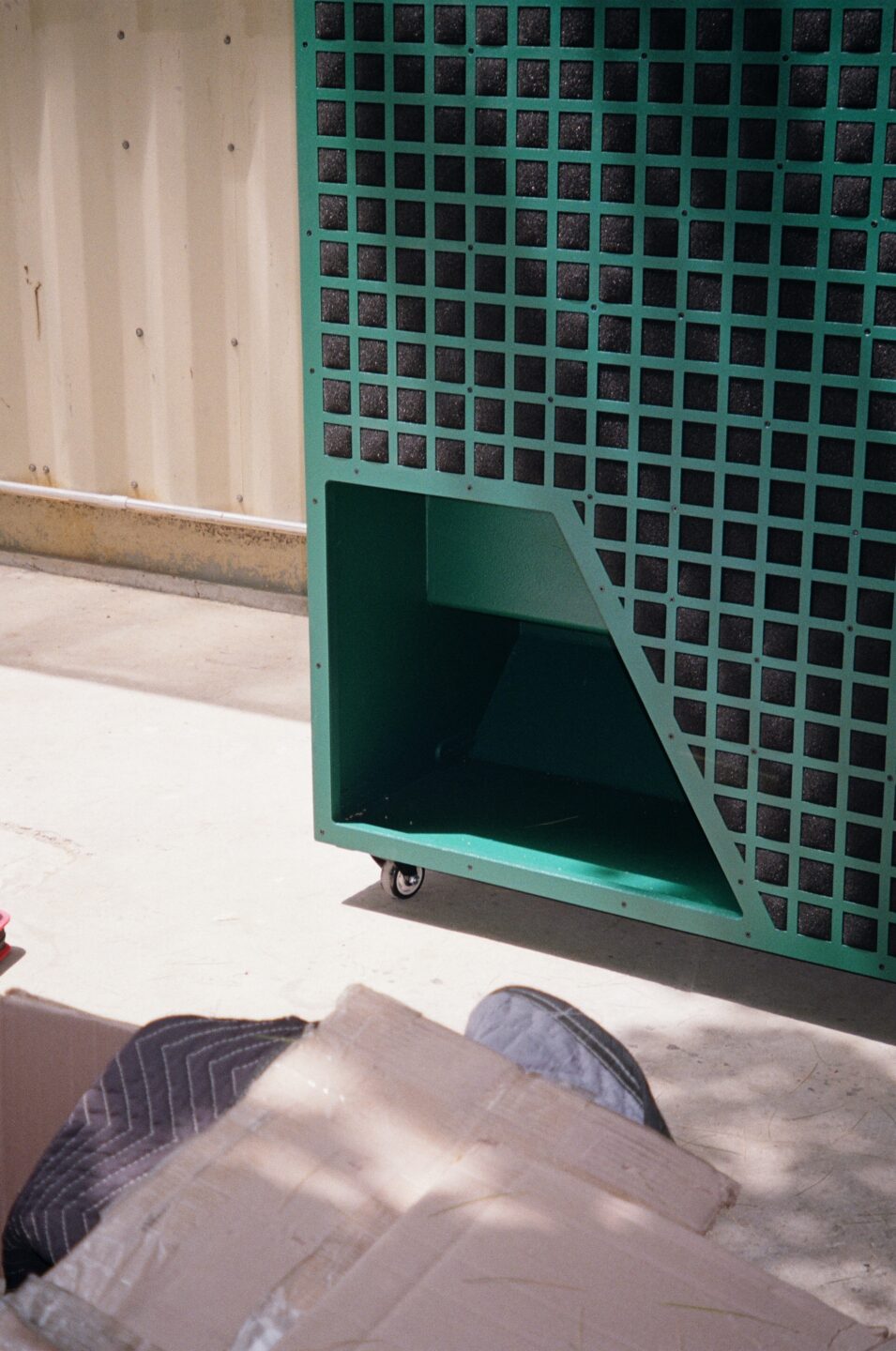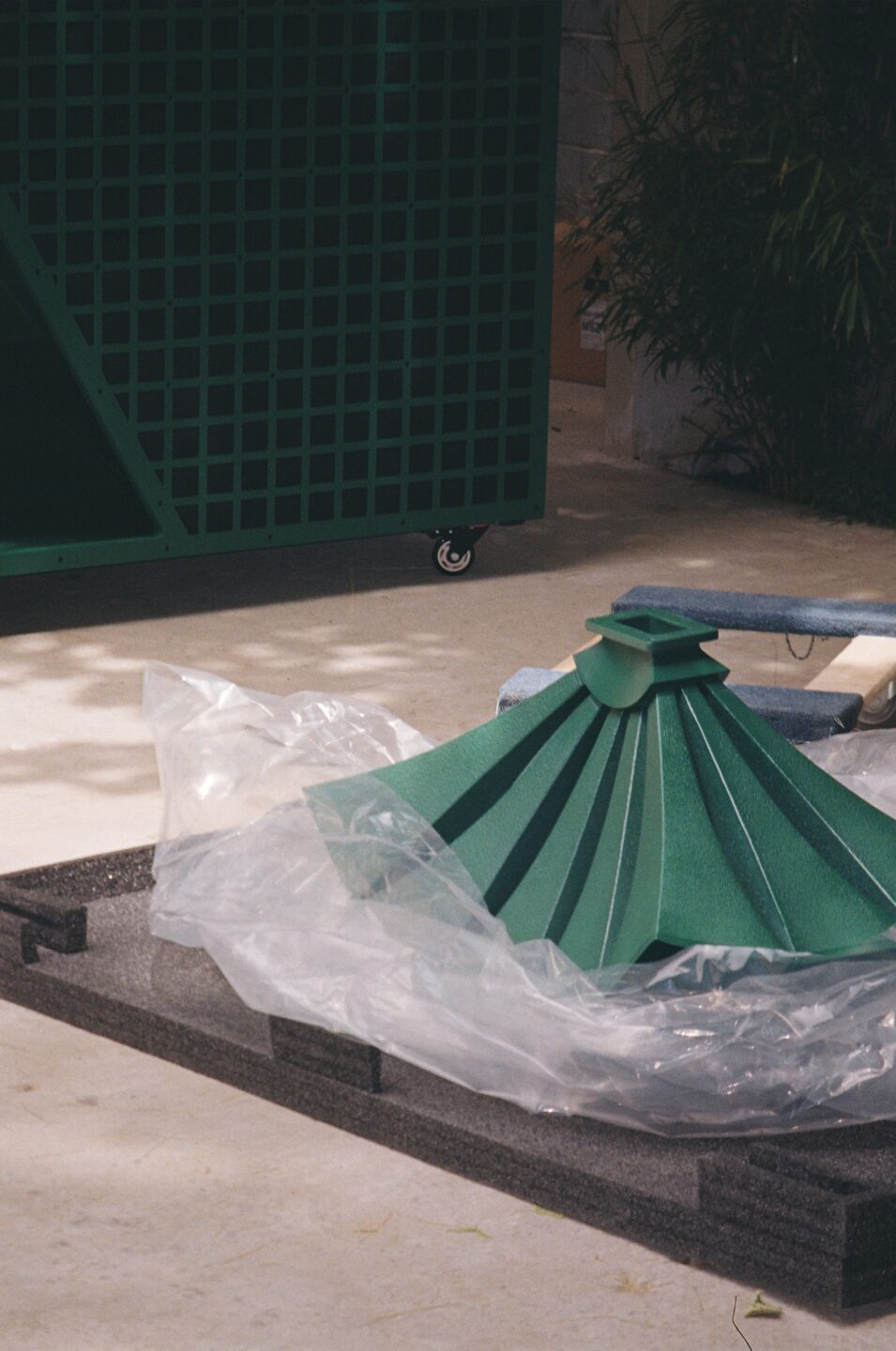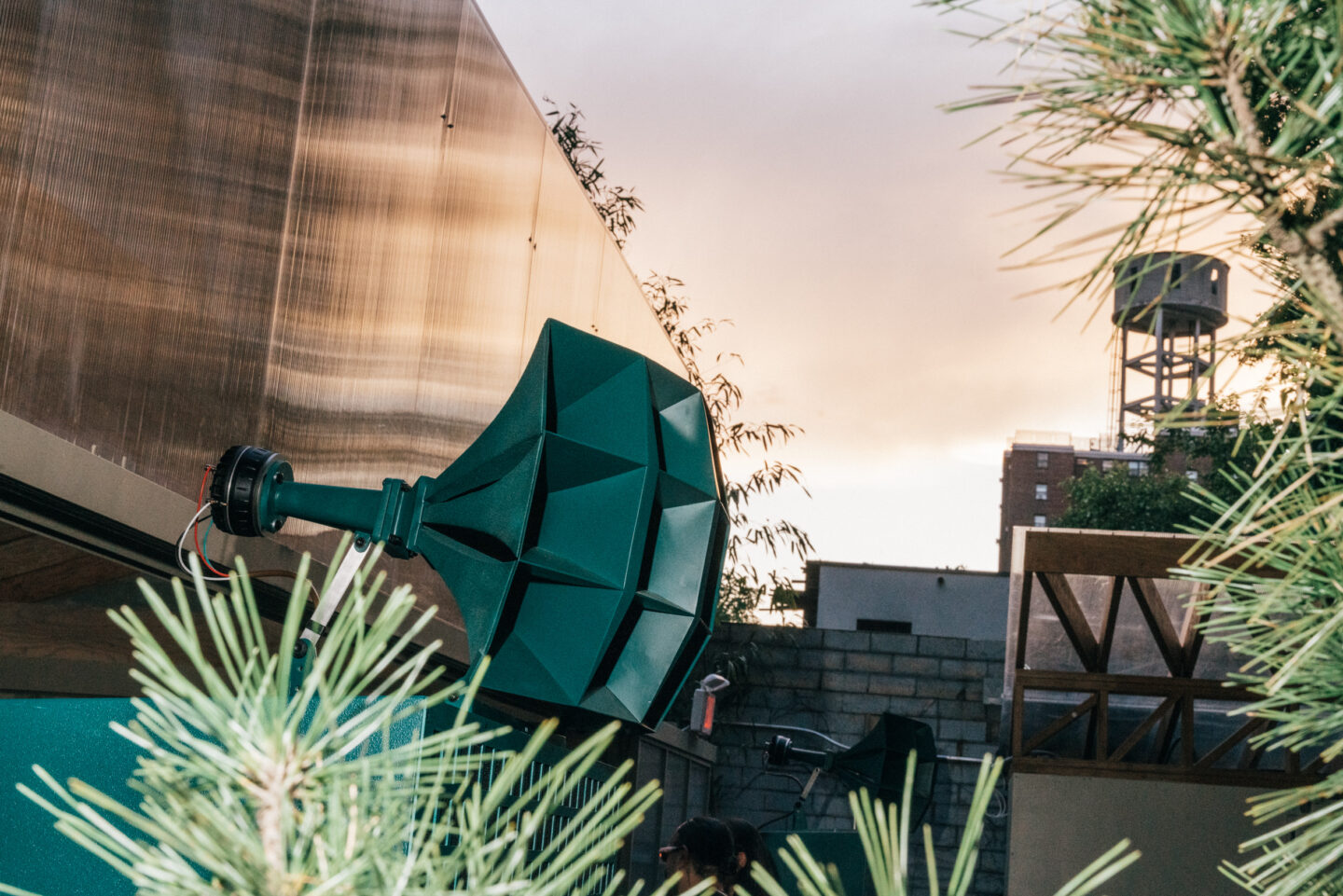How did you both originally meet and when, how, or why did you decide to start collaborating?
Devon Ojas: Rune and I met at an annual gathering of about 100-150 engineers of tube electronics and high efficiency speaker in Europe. It’s kind of a really serious event that I had always wanted to attend, and 2021 was the first year for both of us. We are significantly younger than most of the members of the group, and I think because we were newcomers we were able to immediately identify with one another. We were also both aware of each others work before meeting, as we’re both very obsessed with the same specific field of interest, and specifically have a high level of experience with vintage Altec speakers.

How do your individual audio practices intersect and was that intersection impetus for this specific project?
DO: As I said, there is a very specific field of interest that we share: high efficiency, low distortion, often large scale horn speaker systems, but with the bandwidth and output to keep up with modern music.
Rune is an exceptionally talented horn designer. Horn design is an incredibly complicated field that very few engineers fully understand. I have had the opportunity to hear a few of these Devor model subs (dual driver push/push with spiral horn loading) paired with full scale Wester Electric horn systems, probably the most critical type of system you could try a horn in, and they blend exceptionally well with other high quality large scale horns. I immediately wanted to collaborate.
I have been working for a long time on innovating and producing multicellular midrange horns specifically. We came up with the idea of designing an mid bass horn that could bridge the gap between an NNNN Devor 16 subwoofer and an Ojas 15 cell 500 Hz mid horn with a modern coaxial compression driver. The result is the system in the garden at Public Records.

For the true audio nerds out there, is there something particular about the technology behind this specific build that is of interest to those of us following the evolution of speaker and amplification technology?
Rune Skramstad:
1. Is a patented horn loading technology using resistive rear chambers where the goal is to provide the drivers with as equal as possible resistance for back and forth movement of the diaphragms seen from the resting position. This technology provides lower distortion, a smoother impedance for the amplifier, a smaller box than what is needed for traditional closed rear chamber horn designs and minimal change of sound signature from low to high sound pressure since there is no enclosed non linear air spring that reduces the diaphragm movement at high sound pressures.
2. A patent pending directional sound technology using the principle of end fire arrays enabled by the drivers positions, the horn path, the asymmetrical horn mouth position and box geometry. Together this design ends up having close to a sub cardioid dispersion pattern in the nearfield of the box even for infrabass frequencies so that artists behind the subwoofers will have significantly lower sound pressure than what is coming out on the front side, typically 6-18dB reduction from front to back within the subwoofers bandwidth.
3. Mechanically balanced drivers ensure that structurally transferred vibrations are kept to a minimum, and this is important since sound travels much faster in a solid material (ground, stage and so on) than in a gas (air).

Are there any sets from our summer programming that you’re excited to hear on this system?
DO: I think this weekend the Dope Jams party should be a great opportunity for people to be able to experience it.
FOR NNNN: You tout “iconic Nordic design” as elemental to your work, can you describe what that means to you?
Torkel Mellingen: The Nordic design tradition is about keeping the modernist idea of form follows function – but with an emphasis of the human interaction with the product.
When applying these principles to the products we are working on, horn speakers are fundamentally complex acoustic designs, but the human interaction demands that the products be practical and aesthetic, so there is a process of finding the fundamental design of the product that is based on dialogue.
When we started working with Devon, it was clear that his sense of minimalism and search for the essence of this product category shared a lot of common ground with our design values, so figuring out the design of the products we collaborate on has been both very inspiring, effortless and natural.
Working on the club system for Public Records was fundamentally about integrating very unique acoustic designs into something wholistic – both in terms of performance, as well as visually – while still letting the various acoustic designs be reflected visually according to their function.
FOR DEVON: Are there any future projects you are working on that you are particularly excited about?
I have several things i’m really excited about this summer, but right now i’m focussed on preparing for another show with Lisson Gallery. This summer I will be showing at Lisson Gallery in London from July 11 through late August. We will have the same work in use as last summer in NYC, as well as some additional smaller works in a second room. This time it’s a solo show. Lots of announcements to come!
